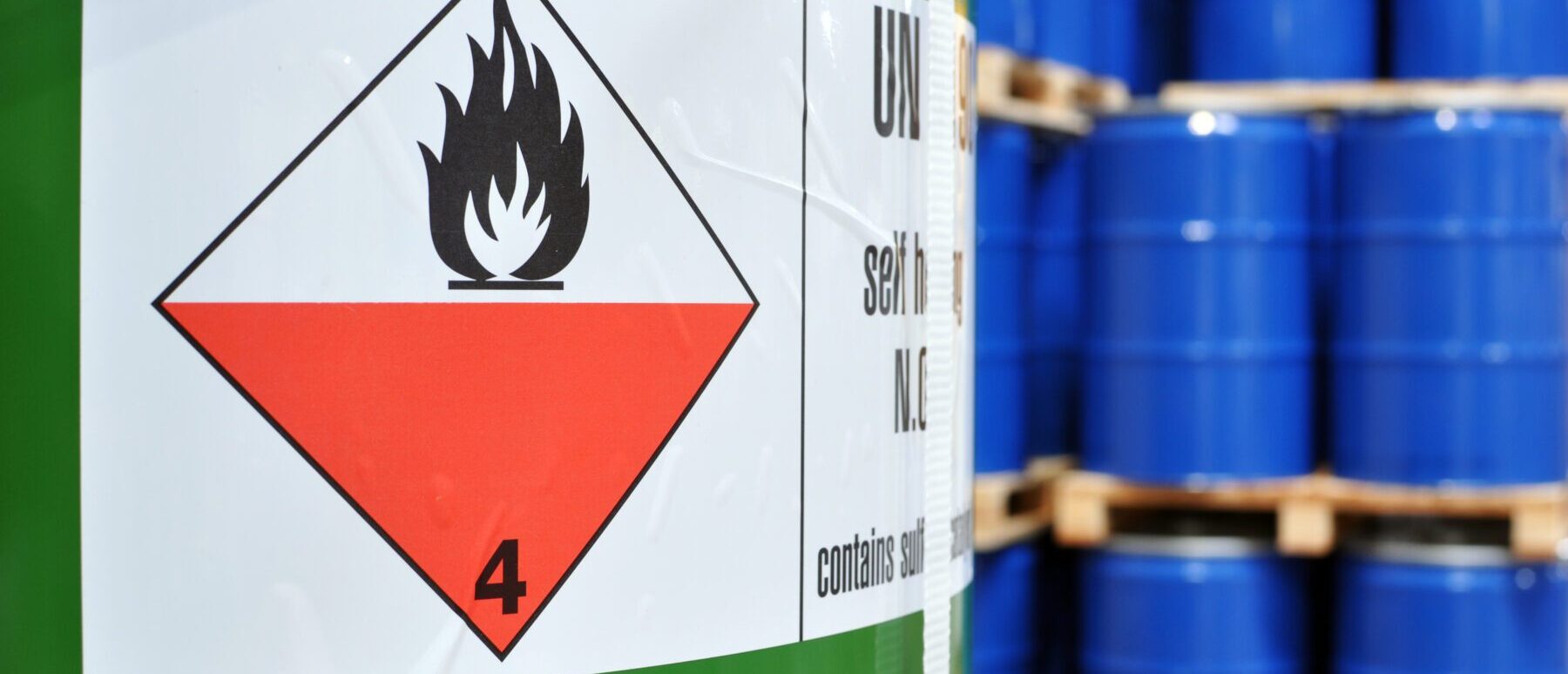

Loading dangerous goods (IMDG)
The transport of dangerous goods is governed by the IMDG code for maritime shipments. Most of these cargoes are transported in sea containers, for which loading operations must be carried out correctly.
Stuffing is the operation of loading goods into a sea container. It is of significant safety importance for all those involved in the dangerous goods transport chain.
These operations must include many essential control points: condition of the goods, packaging, labelling, marking, separation, condition of the transport vehicle, loading, stowage, placarding, etc…
The considerable safety risks involved in transporting dangerous goods
What is the role of the "empoteur"?
The packer (or loader) is the party who loads a transport vehicle or places cargo on a vehicle. The packer may be contracted by the shipper, shipper, forwarder or carrier.
What does the buyer commit to?
To allow loading of a container containing dangerous goods, the carrier must receive a copy of the transport document as prescribed in the IMDG Code. No format or template is required, but the information requested, as well as the certification and signature, are mandatory.
This document, known as the packing certificate, must bear the container identification number and be signed by the person responsible for packing, preceded by the words “It is hereby declared that the container has been packed in accordance with the provisions of § 5.4.2.1.
By signing the stuffing certificate, the stuffer undertakes that all packages have been properly loaded and that the cargo has been evenly distributed in the container (5.4.2.1). Stowage must be in accordance with the intended conditions of transport (land and sea).
What are the consequences of improper loading?
The consequences of improper loading can be disastrous in human, material and environmental terms.
Tragic accidents have already occurred on board ships. In 2019, numerous disasters were recorded: YANTIAN EXPRESS, APL VANCOUVER, E.R KOBE, GRANDE AMERICA, KMTC HONG KONG, APL LE HAVRE.
Between January and August 2019, 8 fires started on board ro-ro or container ships.1
In 2020, the vessel COSCO PACIFIC was en route to PORT KLANG when a fire broke out on board from a container of lithium batteries improperly declared as spare parts.
There are many reasons for this:
- Incorrect statement.
- Packaging problems
- Stowage or loading problem.
The various statistics (IMO or independent body) tell us that the main non-conformities relate to stowage and loading problems in containers.
Compliance with potting regulations is crucial to guarantee safety for all.
In addition to the considerable safety risks involved in transporting dangerous goods, the consequences can also be legal:
According to the French Transport Code (Article L5241- 11), the person responsible for loading, unloading, loading, classification, packaging (…) declaration and handling operations that infringe the rules mentioned in Article L.5241-10-1 is liable to a fine of €75,000.
The consequences of improper loading can be disastrous in human, material and environmental terms.
Load cancellations
Some shipping lines carry out container inspections and block shipments ashore if the stuffing proves non-compliant. Depending on local regulations, the competent authority may also request that the doors be opened for inspection during transport.
We are observing an intensification of these controls (especially in northern European ports). If any non-conformity is noted on the shipment, the doors are opened to ensure compliance with regulations (IMDG code, CSC convention, CTU code, etc.).
What do you need to know about training potters?
Packers / consolidators handling dangerous goods must be trained to perform their duties. Training must include: documentation, classification, marking/labeling, placarding/marking, material segregation, limited quantity knowledge, emergency instructions, first aid and CTU code.
In this respect, the IMDG code refers to the IMO/ILO/UNECE guidelines in paragraph 1.3.1.5 and in particular to the CTU (Cargo Transport Unit) code, for which application has been made mandatory in all French ports since 2017.
This is a major and relatively recent development. Loaders can refer to this code for questions relating to handling, loading and securing loads, among other things.
Our experience in the field over many years shows that container loading and stuffing practices are in dire need of change.
Training is essential for any company wishing to guarantee compliance with the rules essential to the safety of all those involved in transport.
1Publication in container insight weekly.
Related posts
Transporting coal according to the IMDG code
Numerous fires have been reported on board vessels transporting activated carbon
How to reduce the cost of securing?
Is it possible to reduce costs while maintaining or increasing the performance o
Container stuffing according to the CTU Code
Transporting goods is a complex process that requires a great deal of attention




